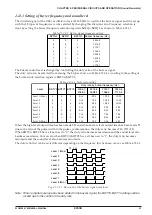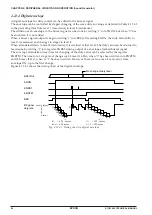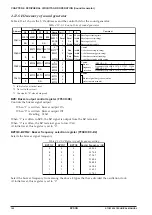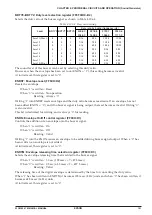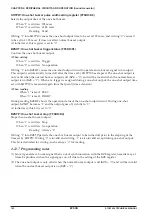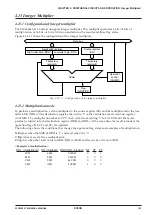
S1C63656 TECHNICAL MANUAL
EPSON
111
CHAPTER 4: PERIPHERAL CIRCUITS AND OPERATION (R/f Converter)
(2) R/f conversion using a resistive humidity sensor
This conversion is possible only in channel 1, and this method is selected by setting the RFSEL register
to "1". This is basically the same as the R/f conversion described above (1), but the AC bias circuit
works for the humidity sensor.
Figure 4.14.2.4 shows the connection diagram of external devices.
R2
V
SS
C
SEN1
HUD
REF1
RFIN1
Channel 1
R1:
R2:
C:
Resistive humidity sensor
Reference resistor
Capacitor
R1
Fig. 4.14.2.4 Connection diagram of resistive humidity sensor
Connect a humidity sensor between the HUD and SEN1 terminals, and connect a reference resistance
between the REF1 and RFIN1 terminals.
Connect an oscillating capacitor that is used for CR oscillation of both the reference resistance and the
sensor between the RFIN1 and V
SS
terminals.
The oscillating operation by reference resistance is the same as the R/f conversion described above
(1). The humidity sensor cannot be DC biased for a long time, therefore this method powers the HUD
and SEN1 terminals alternately.
V
SS
Tr1
Tr2
V
SS
REF1
SEN1
RFIN1
V
DD
Oscillation
control
circuit
RFOUT
Count
clock
➀
HUD
S1
S2
➁
➀
➁
Tr1 = ON, S1 = ON
Tr2 = ON, S2 = ON
Fig. 4.14.2.5 CR oscillation circuit for resistive humidity sensor
The oscillation waveform is the same as Figure 4.14.2.3.

